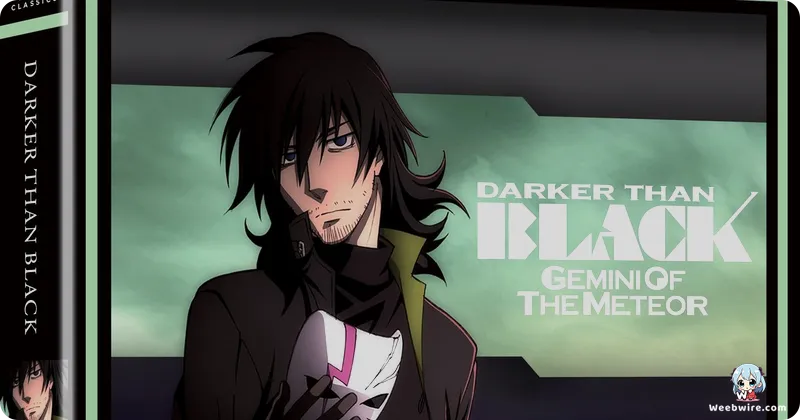The Black Reaper's Downfall: Deconstructing the Intentional Trauma and Hidden Mythology of Darker than Black: Gemini of the Meteor

The 2009 sequel, Darker than Black: Gemini of the Meteor, is recognized as one of the most intellectually demanding and polarizing follow-ups in contemporary anime. The original series established the stoic and formidable agent Hei, known as the 'Black Reaper.' However, the second installment presented him as a drunken, traumatized individual, a dramatic shift that surprised many longtime viewers. This character regression, coupled with the introduction of the new co-protagonist Suou Pavlichenko, was not a narrative flaw but a calculated, lore-driven decision by director Tensai Okamura. The sequel aimed to thoroughly examine profound themes of identity loss, moral burden, and self-sacrifice within the franchise's intricate mythology. To fully grasp the sequel's intent, it is necessary to understand the deep, often-missed facts that explain Hei’s diminished state and Suou’s engineered existence.
The Truth Behind Hei's Lost Power
A crucial piece of background information, often overlooked by those unfamiliar with the bridging Darker than Black Gaiden OVAs, clarifies Hei's status. Hei was never a genuine Contractor. His signature ability to generate and manipulate electricity was a borrowed power, temporarily transferred from his sister, Bai, during the catastrophic events at Heaven's Gate. Hei’s true, inherent ability, which activated when he absorbed Bai's power, is the devastating capacity to nullify the existence of Contractors and the Gates themselves.
By the beginning of Gemini of the Meteor, Hei has tragically lost access to Bai’s potent electrical control following his confrontation with Izanami. He retains only his draining nullification ability, which is significantly less practical for conventional combat scenarios. His subsequent physical and psychological decline is a direct result of this massive power vacuum, compounded by the intense grief over losing Yin and the moral exhaustion stemming from his clandestine operations.

Suou Pavlichenko: The Engineered Vessel
The title itself, Gemini of the Meteor, provides the essential context for understanding the new deuteragonist, Suou Pavlichenko. Suou is not a typical human who spontaneously developed abilities; she is an artificial construct, essentially a 'clone' meticulously engineered by her twin brother, Shion. Shion, a true Contractor possessing immense reality-altering powers, utilized a fragment of the Meteor Core to create Suou as a dedicated receptacle.
The cherished memories of a normal family life that Suou desperately attempts to recover were entirely fabricated and implanted by Shion to provide the vessel with a functional human identity. This revelation underscores the series’ nihilistic undertones, as Suou’s entire emotional arc is based on a falsehood. Her ultimate transformation into a Doll signifies the calculated completion of her role as a vessel, effectively stripping her valued human memories of any objective meaning within the broader geopolitical conflict.
Geographical Significance: Heaven's Gate
The geographical shift in the series is also highly significant. While Season 1 focused on Tokyo's 'Hell's Gate,' the sequel heavily features 'Heaven’s Gate' in Siberia. Hell's Gate serves merely as the source generating Contractor powers, whereas Heaven's Gate is the primordial nexus where the entire Contractor system was originally established. The core objective driving clandestine organizations in Season 2 is the destruction of Heaven's Gate, which represents the potential final eradication of the Contractor phenomenon globally. Studio Bones utilized the sequel not just to continue a narrative, but to profoundly deconstruct the established mythos, compelling viewers to confront difficult questions regarding humanity, power, and the nature of memory. This deliberate emphasis on psychological consequence, rather than conventional action, ensures Gemini of the Meteor remains a dense and rewarding text for those willing to analyze its intricate, hidden lore.
Credits
Darker than Black: Gemini of the Meteor
Author
Tensai Okamura
Cover Art
Yuji Iwahara
Studio
Bones
Publisher
Aniplex
Producers





